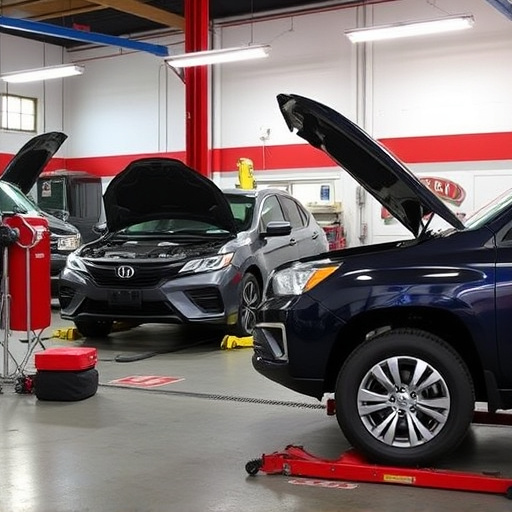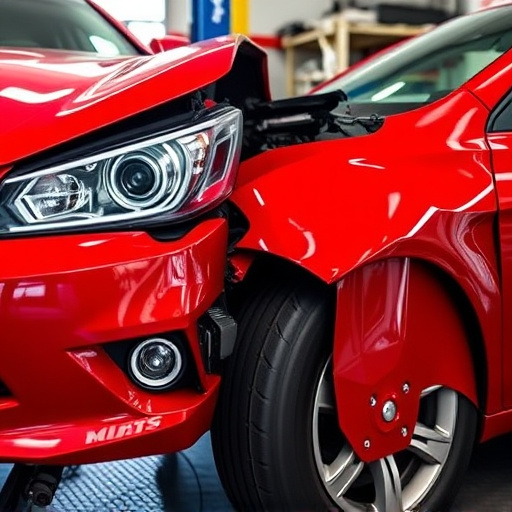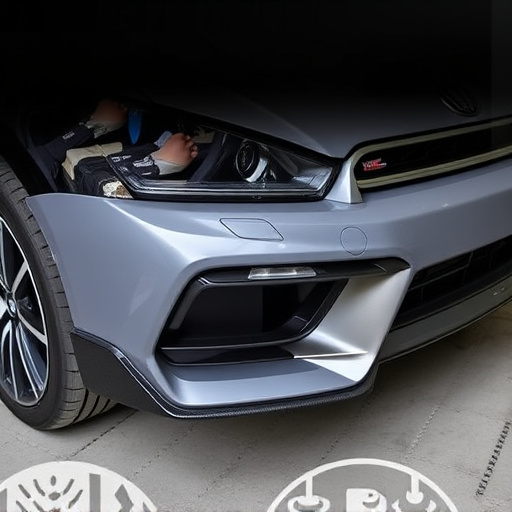Mercedes Headlight Adjustment: Boost Nighttime Safety and Visibility

Mercedes headlight adjustment is vital for safe nighttime driving, ensuring optimal visibility and h…….
In the realm of automotive technology, precision lighting systems have emerged as a cornerstone for enhancing safety, visibility, and driving experience. At the forefront of this evolution is the “Mercedes Headlight Adjustment” (MHA) system, a groundbreaking feature that allows drivers to dynamically optimize their vehicle’s headlights for various conditions. This article delves into the intricacies of MHA, exploring its technical aspects, global impact, economic implications, technological advancements, regulatory landscape, challenges, and its role in shaping the future of automotive lighting. By the end, readers will grasp the significance of this innovation and its potential to revolutionize driving under different circumstances.
Definition: Mercedes Headlight Adjustment refers to a sophisticated technology that enables the dynamic adjustment of a vehicle’s headlamps to optimize lighting performance based on driving conditions, weather, and personal preferences. This system aims to provide drivers with the best possible illumination for safe and comfortable driving.
Core Components:
Headlamp Modules: These are the physical units housing high-intensity LEDs or halogen bulbs, along with electronic controls and sensors. They can tilt or swivel to direct light in different directions.
Sensors and Actuators: MHA relies on various sensors like ambient light, rain, lane departure, and camera data. Actuators then adjust headlamps based on these inputs using precision motors.
Control Unit: The brain of the system, it processes sensor data and executes commands to control headlamp positioning. This unit ensures seamless adjustments for optimal lighting.
Historical Context:
The concept of adjustable headlights dates back to the early 20th century when mechanical systems were used to tilt lamps. However, modern MHA systems are a product of recent advancements in electronics, sensors, and light-emitting diodes (LEDs). Mercedes-Benz introduced the first production car with electronically adjusted headlights in 2010, marking a significant milestone in automotive lighting innovation.
Significance:
MHA offers numerous benefits:
Enhanced Safety: Dynamic headlight control improves visibility during night driving, bad weather, or navigating curves.
Increased Comfort: Drivers can set preferred lighting angles for personalized comfort.
Improved Fuel Efficiency: By optimizing light distribution, it reduces the need for high beam usage, saving energy.
Environmentally Friendly: LED headlights with MHA are more energy-efficient than traditional incandescent bulbs.
Mercedes Headlight Adjustment has garnered worldwide attention due to its potential to revolutionize driving safety and comfort. Here’s a glimpse into its global influence:
| Region | Trends & Adoption | Key Drivers |
|---|---|---|
| North America | High adoption rate, with luxury car manufacturers leading the way. Regulators pushing for advanced lighting systems to enhance road safety. | Stricter headlight performance standards, consumer demand for premium features. |
| Europe | Rapidly growing market, especially in Germany and Sweden, known for their automotive innovation. Government incentives promote LED technology. | Strict environmental regulations, consumer preference for energy-efficient features. |
| Asia Pacific | Strong interest from countries like Japan and South Korea, focusing on advanced driver-assistance systems (ADAS). | Rapid urbanization leading to congestion and safety concerns, government support for smart city initiatives. |
The global trend shows a steady rise in MHA adoption across all major regions, driven by safety regulations, consumer demand, and environmental considerations.
The economic implications of Mercedes Headlight Adjustment are multifaceted:
Market Size: The global automotive lighting market is projected to reach USD 52.6 billion by 2027, with MHA as a key driver. This growth is attributed to increasing vehicle sales, especially in the luxury segment.
Investment Patterns: Major automakers are investing heavily in R&D for advanced lighting systems, including MHA. For instance, Tesla’s recent focus on autonomous driving and lighting technology demonstrates this trend.
Economic Impact: MHA contributes to economic growth by creating jobs in automotive manufacturing, research, and development. It also reduces fuel consumption and vehicle emissions, aligning with sustainable economic goals.
MHA is at the forefront of several technological breakthroughs:
LED Revolution: LED headlights offer exceptional brightness, energy efficiency, and longer lifespans compared to traditional bulbs. MHA seamlessly integrates this technology for optimal performance.
Sensor Fusion: Advanced sensors combine data from cameras, radars, and LiDAR to provide accurate environmental awareness, enabling precise headlight adjustments.
Machine Learning: AI algorithms can learn driver preferences and adjust headlights accordingly. This personalization enhances the overall driving experience.
Autonomous Vehicles: MHA plays a crucial role in autonomous cars’ perception systems, ensuring they navigate and react to their surroundings with precision.
Regulatory bodies worldwide are recognizing the importance of advanced lighting systems, including MHA:
European Union: The EU’s New Car Assessment Program (NCAP) includes strict headlight performance standards, encouraging manufacturers to adopt MHA for improved safety.
United States: The National Highway Traffic Safety Administration (NHTSA) is pushing for advanced lighting technologies, aiming to reduce traffic fatalities and injuries.
China: Stricter emission norms and safety regulations have fueled the adoption of MHA in China’s automotive industry.
These policies drive innovation, ensuring that vehicles meet safety standards while offering enhanced lighting features.
Despite its numerous advantages, MHA faces certain challenges:
Cost: Advanced lighting systems can significantly increase vehicle prices, potentially limiting their affordability for some consumers.
Technical Complexity: The intricate nature of the system may lead to higher maintenance costs or reliability issues if not properly designed and serviced.
Regulatory Variability: Different regions have varying regulations, creating challenges for manufacturers aiming for a global market.
Solutions and Strategies:
Cost Optimization: Mass production and modular design can reduce costs over time. Standardization across the industry can also lower prices for consumers.
Reliability Testing: Rigorous testing protocols ensure the system’s durability and long-term reliability, addressing potential maintenance concerns.
Global Harmonization: International collaboration among regulators can create consistent standards, simplifying compliance for manufacturers.
Mercedes-Benz’s flagship S-Class sedan is renowned for its MHA system, offering a premium driving experience. The vehicle features:
Adaptive High Beam Assist: Automatically switches between high and low beams based on oncoming traffic, ensuring optimal visibility without blind spots.
Dynamic Bend Light: Curves the headlamps around corners, improving visibility during lane changes and turns.
Personalized Headlight Settings: Drivers can customize headlight angles, intensity, and color temperature for individual preferences.
This case illustrates how MHA enhances luxury and safety, setting a benchmark for other vehicles.
Volvo’s XC60 SUV showcases MHA in the context of autonomous driving. Its advanced lighting system includes:
360-Degree Lighting Scanning: Scans the environment up to 500 meters ahead, creating a dynamic light pattern to guide other drivers and pedestrians.
Adaptive Cruise Control Integration: Works with cruise control to maintain safe following distances, improving overall safety.
This application demonstrates MHA’s potential in autonomous vehicles, where precise lighting control is essential for safe navigation.
The future of Mercedes Headlight Adjustment looks promising, with several growth areas and emerging trends:
Smart Connectivity: Integrating MHA with vehicle diagnostics and smartphone apps allows remote headlight adjustments and real-time performance monitoring.
Augmented Reality (AR) Headlights: AR technology can overlay digital information on the road ahead, enhancing driver awareness without disturbing nighttime visibility.
Adaptive Lighting for Pedestrians: Customizing lighting patterns to gently guide pedestrians across roads safely is a potential future development.
Global Standardization: The industry may move towards global standards for MHA, ensuring interoperability and simplifying cross-border vehicle sales.
Mercedes Headlight Adjustment represents a significant step forward in automotive lighting technology. Its ability to dynamically optimize lighting based on diverse conditions enhances safety, comfort, and overall driving experience. As global regulations align with consumer demands for advanced features, MHA will continue to shape the future of mobility. By addressing challenges through innovation and standardization, this technology promises to illuminate our roads more efficiently, safely, and sustainably.
Q: How does MHA differ from traditional headlamps?
A: Traditional headlamps have fixed positions, while MHA allows dynamic adjustments based on various factors like speed, weather, and vehicle orientation.
Q: Are adjustable headlights safe?
A: Yes, when designed and tested properly, MHA systems are highly safe, improving visibility without causing blind spots or glare.
Q: Can I customize headlight settings for different driving conditions?
A: Absolutely! Many modern vehicles offer personalized lighting profiles for normal driving, bad weather, or high-beam assistance.
Q: How does MHA impact fuel efficiency?
A: By optimizing light distribution and reducing the use of high beams, MHA can contribute to better fuel economy, especially in long-distance drives.
Q: What are the maintenance requirements for MHA systems?
A: Regular maintenance involves ensuring proper lubrication of actuators and sensors. Most modern systems are designed for low-maintenance operation, with specific service intervals detailed in vehicle manuals.

Mercedes headlight adjustment is vital for safe nighttime driving, ensuring optimal visibility and h…….

Mercedes headlight adjustment is a safety and legal necessity after a collision. Advanced sensors an…….

Proper Mercedes headlight adjustment is crucial for safe and comfortable night driving, preventing a…….

Mercedes headlight adjustment is vital for safety and driving experience. Proper alignment prevents…….

Mercedes headlight adjustment is vital for safe driving, optimizing road illumination and reducing b…….

Proper Mercedes headlight adjustment is crucial for safe nighttime driving. Regular alignment ensure…….

Mercedes cars are renowned for their advanced headlight adjustment mechanisms, enhancing safety and…….

Mercedes headlight adjustment is vital for advanced driver-assistance systems (ADAS) performance and…….

Proper Mercedes headlight adjustment ensures safety and optimal lighting performance. It involves fr…….

For Mercedes owners, proper headlight alignment after front-end incidents is crucial for safety and…….